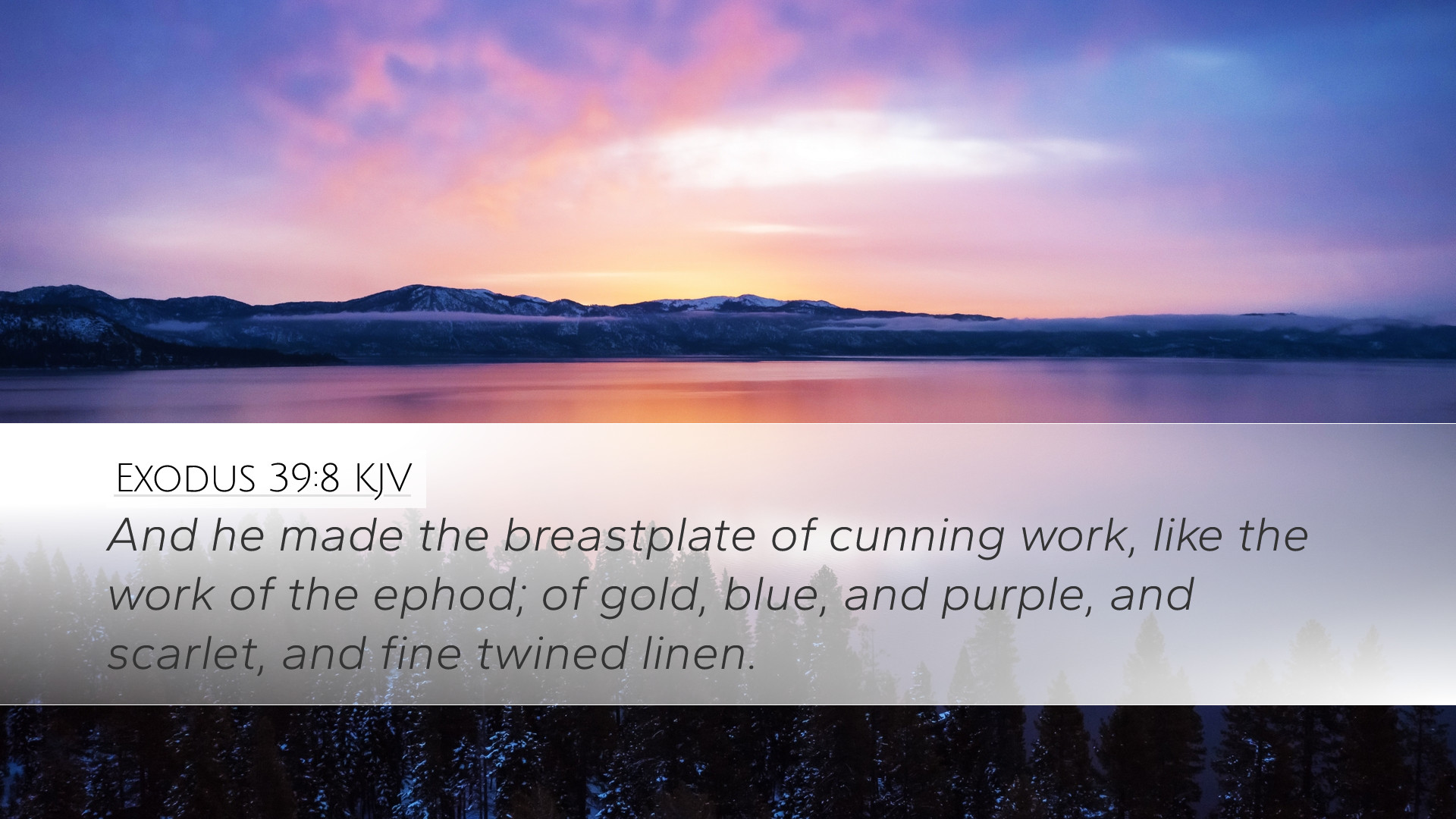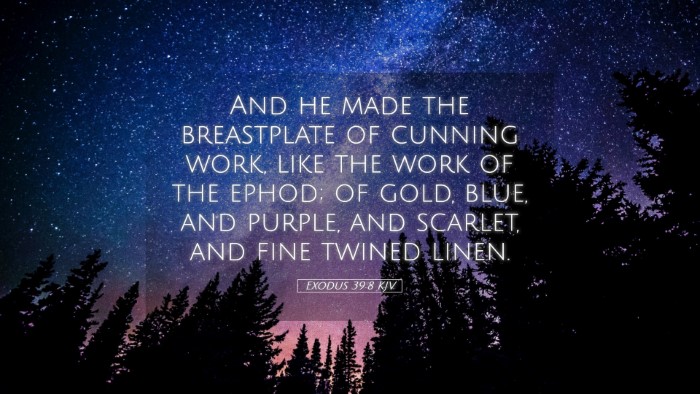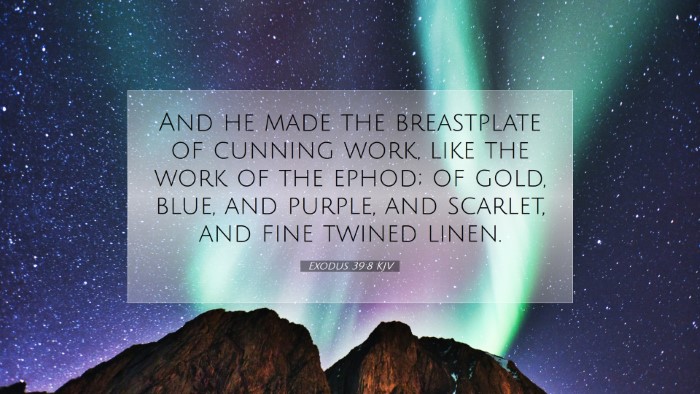Commentary on Exodus 39:8
Exodus 39:8 (KJV): "And he made the breastplate of cunning work, like the work of the ephod; of gold, blue, and purple, and scarlet, and fine twined linen."
Introduction
The passage in Exodus 39:8 describes the making of the breastplate of the High Priest, a pivotal piece in the priestly garments that not only symbolizes but also serves functional purposes in the rituals of ancient Israel. The intricate details of its construction reveal theological significance critical for pastors, students, theologians, and Bible scholars.
The Significance of the Breastplate
The breastplate is referred to as “the breastplate of judgment” (Exodus 28:15), illustrating its role in decision-making and intercession for the people of Israel before God.
1. Symbol of Divine Authority
Matthew Henry points out that the breastplate represents the authority bestowed upon the high priest to stand as mediator between God and the people. This item of profound significance was adorned with precious stones, each engraved with the names of the tribes of Israel, symbolizing the high priest carrying the people’s burdens before God.
2. Craftsmanship and Divinity
Albert Barnes emphasizes the phrase "of cunning work," noting that the craftsmanship of the breastplate was divinely inspired. It was not only a representation of human talent but also of divine creativity, echoing the notion that the best human work comes from obedience to God's commands.
3. Spiritual Representation
Adam Clarke elaborates on the colors used in the breastplate—gold, blue, purple, scarlet, and fine twined linen. Each of these hues carries symbolic weight; for example, gold signifies divinity, blue depicts heavenly nature, and purple symbolizes royalty. Thus, the breastplate is indicative of the high priest’s unique position in the covenant community and his relationship with God.
The Crafting Process
The meticulous detail in the construction of the breastplate aligns with the overall account of the tabernacle furnishings, highlighting God’s desire for perfection and beauty in worship.
1. Divine Specifications
The instruction for making the breastplate was given by God Himself, illustrating the seriousness of the task and underscoring the need for obedience in worship practices. Matthew Henry reminds us that the way we approach God in worship reflects the character of God as holy and deserving of reverence.
2. The Work of Community
A noteworthy aspect of the construction of the breastplate was the involvement of skilled artisans, which Clarke describes as a reflection of communal effort guided by divine inspiration. It exemplifies how God’s work is often accomplished through a community of believers, reinforcing the principle that each individual’s talents can be used for the fulfillment of His purposes.
Theological Implications
The breastplate not only represents the priest's responsibilities but also foreshadows the ultimate High Priest, Jesus Christ, who intercedes for us before the Father.
1. Christ as Our High Priest
Barnes identifies parallels between the high priest’s role in ancient Israel and Christ’s priestly work in the New Testament. Jesus, adorned with the authority and glory of God, carries the names of His people into the presence of God, akin to how the breastplate bore the names of the tribes.
2. Intercession and Advocacy
This understanding of the high priest as an intercessor extends to how believers are called to pray for one another, fulfilling a communal priesthood based on the order of Christ. Henry suggests that just as the high priest bore the judgments of the people on his heart, believers today are called to carry each other in prayer and support.
Conclusion
In summary, Exodus 39:8 paints a vivid picture of divine instruction and human craftsmanship, demonstrating the weighty responsibilities of the high priest. The breastplate serves as a vital link between God and His people, highlighting intercession, authority, and the communal nature of faith. By studying this passage, pastors, students, theologians, and Bible scholars can derive profound insights into worship, community, and Christ's ultimate sacrifice, underscoring the importance of approaching God with reverence and obedience.


